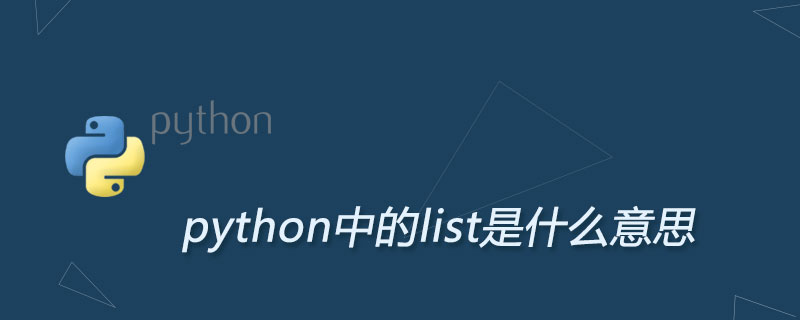python中的list是什麼意思
- silencement原創
- 2019-06-21 16:00:4337861瀏覽

python中的list是列表,是一種資料型態。
序列是Python中最基本的資料結構。序列中的每個元素都分配一個數字 - 它的位置,或索引,第一個索引是0,第二個索引是1,依此類推。
Python有6個序列的內建類型,但最常見的是清單和元組。
序列都可以進行的操作包括索引,切片,加,乘,檢查成員。
此外,Python已經內建確定序列的長度以及確定最大和最小的元素的方法。
清單是最常用的Python資料類型,它可以作為一個方括號內的逗號分隔值出現。
列表的資料項目不需要具有相同的類型
建立一個列表,只要把逗號分隔的不同的資料項使用方括號括起來即可。如下所示:
list1 = ['physics', 'chemistry', 1997, 2000] list2 = [1, 2, 3, 4, 5 ] list3 = ["a", "b", "c", "d"]
與字串的索引一樣,列表索引從0開始。列表可以進行截取、組合等。
向 list 中增加元素
>>> li
['a', 'b', 'mpilgrim', 'z', 'example']
>>> li.append("new")
>>> li
['a', 'b', 'mpilgrim', 'z', 'example', 'new']
>>> li.insert(2, "new")
>>> li
['a', 'b', 'new', 'mpilgrim', 'z', 'example', 'new']
>>> li.extend(["two", "elements"])
>>> li
['a', 'b', 'new', 'mpilgrim', 'z', 'example', 'new', 'two', 'elements']遍歷list
list1 = [x for x in range(0,10,2)]
# 方法一
for i in range(len(list1)):
print(list1[i], end=' ')
# 方法二
for x in list1:
print(x, end=' ')
# 方法三
for ind,value in enumerate(list1):
print(ind, value, sep='=', end = ' ')以上是python中的list是什麼意思的詳細內容。更多資訊請關注PHP中文網其他相關文章!
陳述:
本文內容由網友自願投稿,版權歸原作者所有。本站不承擔相應的法律責任。如發現涉嫌抄襲或侵權的內容,請聯絡admin@php.cn
上一篇:資料分析師為什麼要學python下一篇:資料分析師為什麼要學python

